Student Notable
Interaction Award
Core77 Design Awards 2017
Mnemograph
Mnemograph is a participatory installation that connects two people through the language of their memories. It uses simple interactions and custom built writing desk embedded with networked hardware — scanner, printer, and custom software — to create an experience that merges digital and analog. Participants are invited to choose a prompt, and anonymously contribute a handwritten memory. They submit their memory through a slot in the desk, and, through a process of automation, they get back a print of someone else's similar memory.
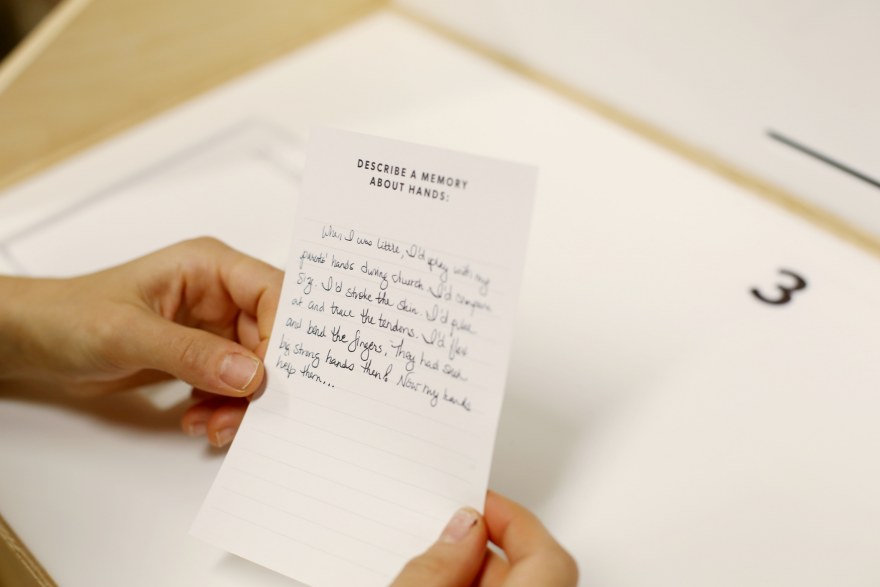
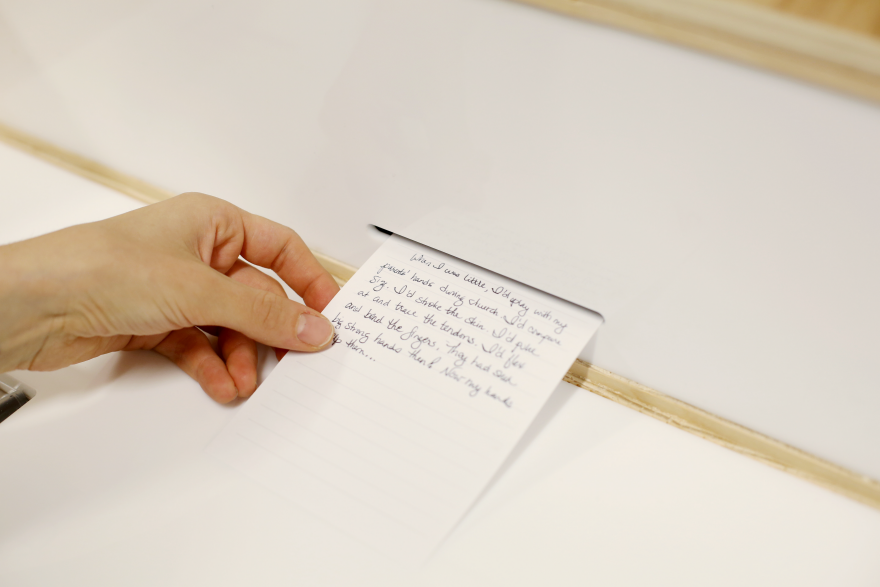
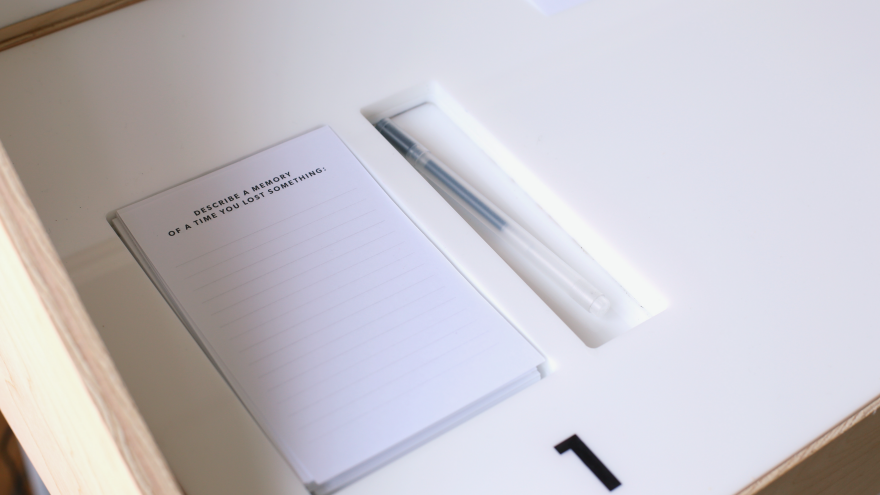
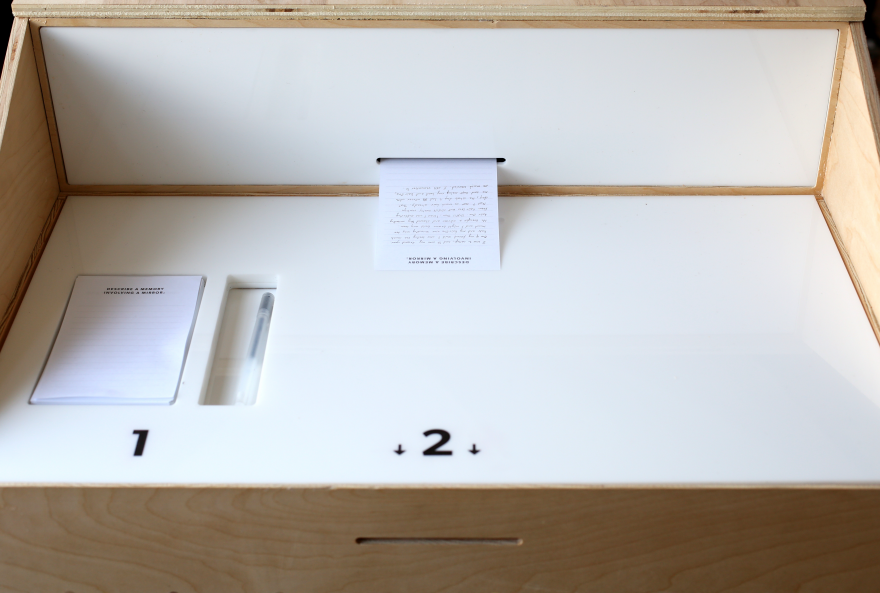
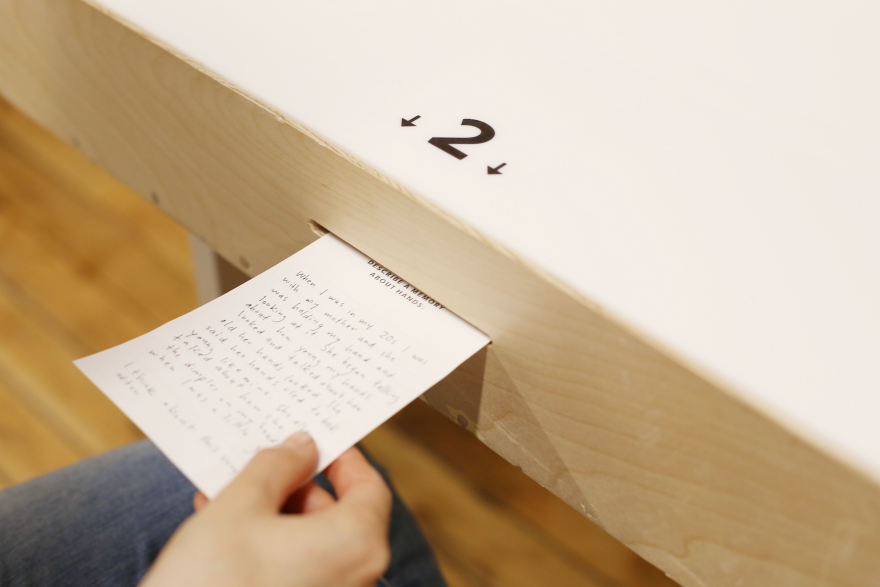
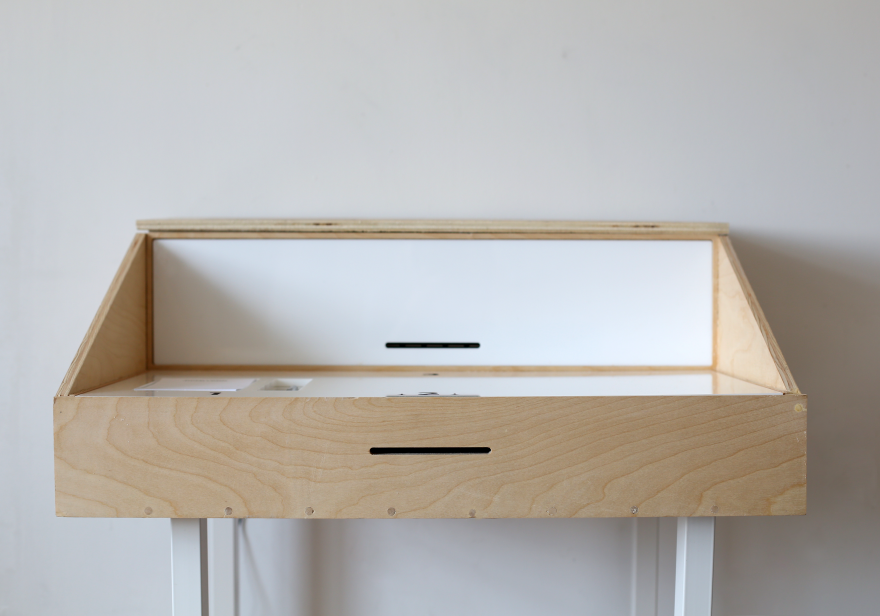
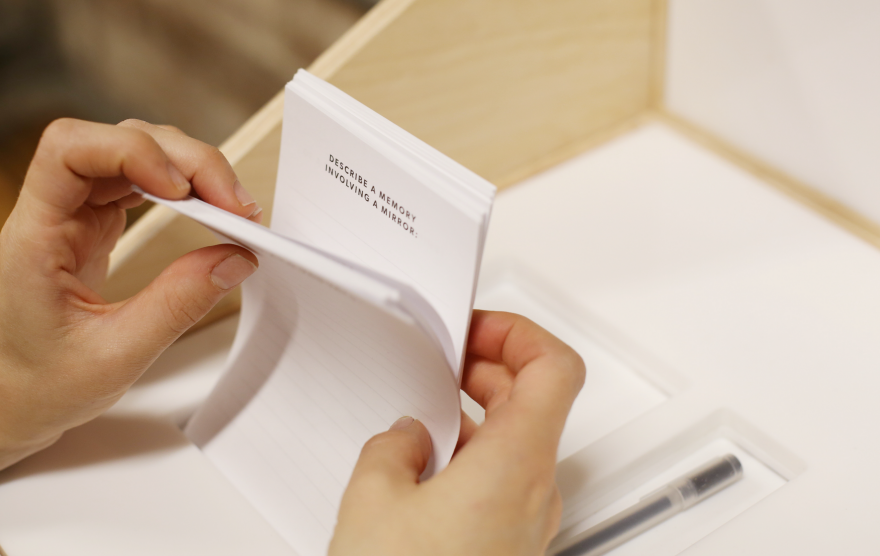
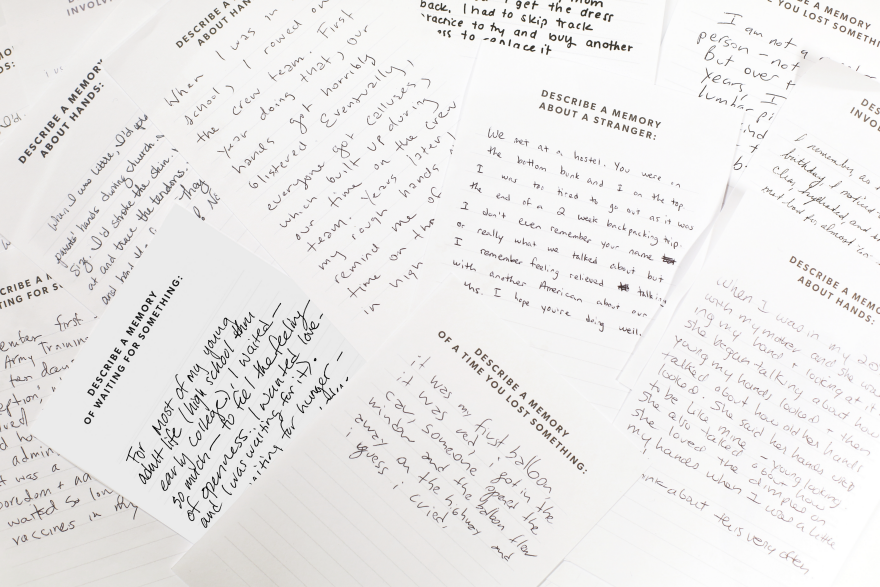

Role: Concept development, experience design (UX, user testing, visual design), software architecture and development, fabrication
Media: Printer, document scanner, custom software, custom-built plywood desk, acrylic, paper, pens
Mnemograph is a participatory installation that connects two people through the language of their memories. It uses simple interactions and custom built writing desk embedded with networked hardware — scanner, printer, and custom software — to create an experience that merges digital and analog. Participants are invited to choose a prompt, and anonymously contribute a handwritten memory. They submit their memory through a slot in the desk, and, through a process of automation, they get back a print of someone else's similar memory.
Background:
I have always been obsessed with personal memory, particularly how they are at once so mundane and also so intimate, so the topic was something I'd thought a lot about. Additionally, lot of my work has been in participatory installation and interactive storytelling, so in a way this project was aligned with a lot of things I'd done before. But it was also very new for me in the sense that it was the most participation-based project I'd made, where I was actually asking a lot of people / users. I had to figure out how to design the interaction to contain both an invitation to participate and also some kind of rewarding experience for people. Getting people to share things, especially intimate ones, is really not easy.
Early on, I realized this project is only as strong as people's contributions; it is really a living, breathing installation that changes with the addition of every single new memory. I had to create an environment that encouraged reflection and sharing. The interface i design was also an exciting challenge. I like to think about how to reanimate familiar form factors in new ways, so this got me excited about developing new interactions that feel human but also rely on new technologies.
Results:
The final experience is designed to create brief moments of connection between anonymous people. I was also interested in giving people an uncanny glimpse into the life of someone they don't know. People's memories are so specific to them — the way they use language, time, setting, handwriting. But at the same time, there is so much repetition between some of the memories it's almost uncanny. It's kind of amazing how much similarity exists among the specificity.
People have contributed really intimate things. Some things are really funny. Some things are really mundane, and there is beauty in that too. Many hundreds of people have contributed at this point, and I've created a site that displays (anonymously) a collection of the memories people have submitted.
Technical Information:
Mnemograph uses a combination of embedded off-the-shelf hardware and custom software written entirely in NodeJS, a Javascript framework. The whole installation runs on a Mac Mini which has the local server, and communicates between the scanner and printer. When a person puts their memory in the slot, it passes through a small document scanner embedded in the desk. The scanner saves the image to a local server, and then uses an OCR (optical character recognition) API to recognize the prompt at the top. Then it automatically sends the memory "match" as an image to a small photo printer embedded in the top of the desk, which comes out the other slot. In the future, I hope to train my own neural networks to recognize handwriting and do more sophisticated "matching" of the memories using Natural Language Processing.